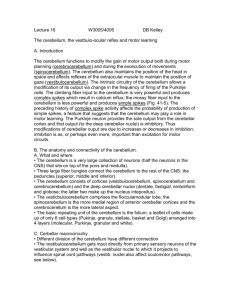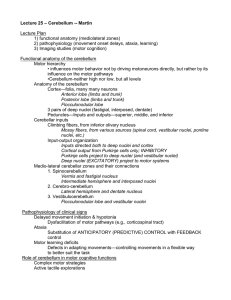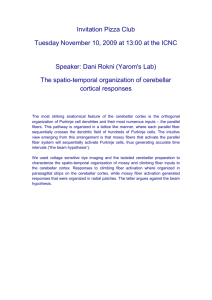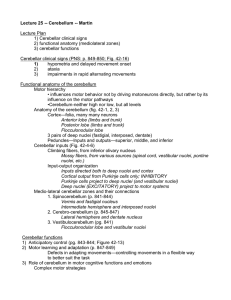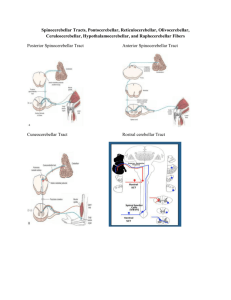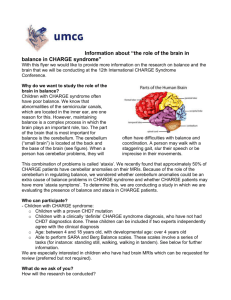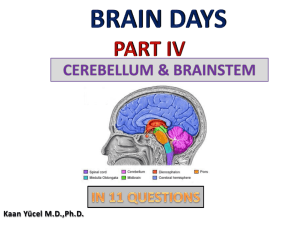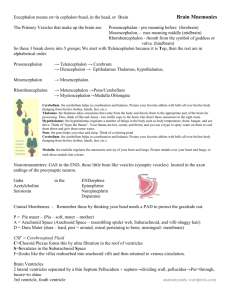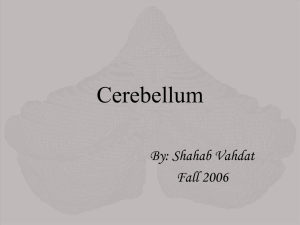Cerebellum & motor learning 2007 Chris Miall
advertisement
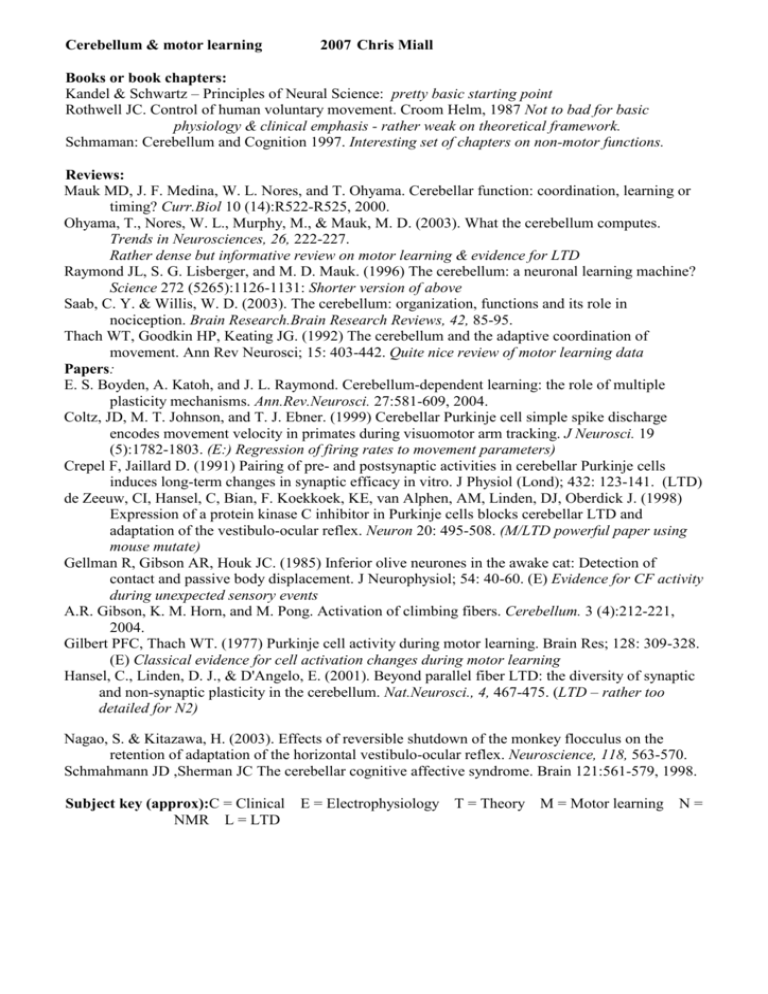
Cerebellum & motor learning 2007 Chris Miall Books or book chapters: Kandel & Schwartz – Principles of Neural Science: pretty basic starting point Rothwell JC. Control of human voluntary movement. Croom Helm, 1987 Not to bad for basic physiology & clinical emphasis - rather weak on theoretical framework. Schmaman: Cerebellum and Cognition 1997. Interesting set of chapters on non-motor functions. Reviews: Mauk MD, J. F. Medina, W. L. Nores, and T. Ohyama. Cerebellar function: coordination, learning or timing? Curr.Biol 10 (14):R522-R525, 2000. Ohyama, T., Nores, W. L., Murphy, M., & Mauk, M. D. (2003). What the cerebellum computes. Trends in Neurosciences, 26, 222-227. Rather dense but informative review on motor learning & evidence for LTD Raymond JL, S. G. Lisberger, and M. D. Mauk. (1996) The cerebellum: a neuronal learning machine? Science 272 (5265):1126-1131: Shorter version of above Saab, C. Y. & Willis, W. D. (2003). The cerebellum: organization, functions and its role in nociception. Brain Research.Brain Research Reviews, 42, 85-95. Thach WT, Goodkin HP, Keating JG. (1992) The cerebellum and the adaptive coordination of movement. Ann Rev Neurosci; 15: 403-442. Quite nice review of motor learning data Papers: E. S. Boyden, A. Katoh, and J. L. Raymond. Cerebellum-dependent learning: the role of multiple plasticity mechanisms. Ann.Rev.Neurosci. 27:581-609, 2004. Coltz, JD, M. T. Johnson, and T. J. Ebner. (1999) Cerebellar Purkinje cell simple spike discharge encodes movement velocity in primates during visuomotor arm tracking. J Neurosci. 19 (5):1782-1803. (E:) Regression of firing rates to movement parameters) Crepel F, Jaillard D. (1991) Pairing of pre- and postsynaptic activities in cerebellar Purkinje cells induces long-term changes in synaptic efficacy in vitro. J Physiol (Lond); 432: 123-141. (LTD) de Zeeuw, CI, Hansel, C, Bian, F. Koekkoek, KE, van Alphen, AM, Linden, DJ, Oberdick J. (1998) Expression of a protein kinase C inhibitor in Purkinje cells blocks cerebellar LTD and adaptation of the vestibulo-ocular reflex. Neuron 20: 495-508. (M/LTD powerful paper using mouse mutate) Gellman R, Gibson AR, Houk JC. (1985) Inferior olive neurones in the awake cat: Detection of contact and passive body displacement. J Neurophysiol; 54: 40-60. (E) Evidence for CF activity during unexpected sensory events A.R. Gibson, K. M. Horn, and M. Pong. Activation of climbing fibers. Cerebellum. 3 (4):212-221, 2004. Gilbert PFC, Thach WT. (1977) Purkinje cell activity during motor learning. Brain Res; 128: 309-328. (E) Classical evidence for cell activation changes during motor learning Hansel, C., Linden, D. J., & D'Angelo, E. (2001). Beyond parallel fiber LTD: the diversity of synaptic and non-synaptic plasticity in the cerebellum. Nat.Neurosci., 4, 467-475. (LTD – rather too detailed for N2) Nagao, S. & Kitazawa, H. (2003). Effects of reversible shutdown of the monkey flocculus on the retention of adaptation of the horizontal vestibulo-ocular reflex. Neuroscience, 118, 563-570. Schmahmann JD ,Sherman JC The cerebellar cognitive affective syndrome. Brain 121:561-579, 1998. Subject key (approx):C = Clinical NMR L = LTD E = Electrophysiology T = Theory M = Motor learning N =

